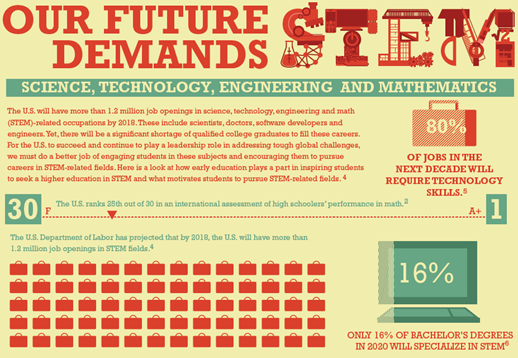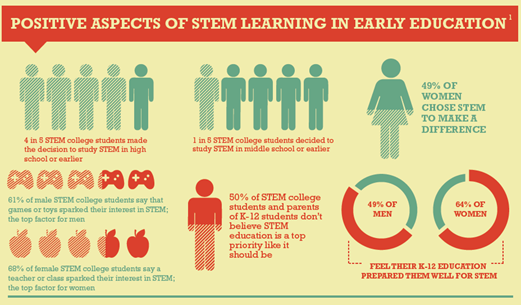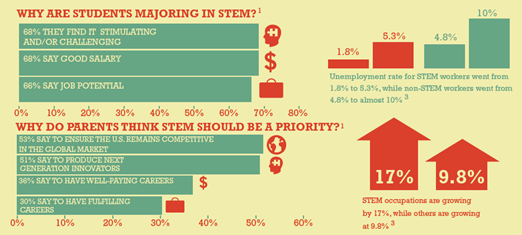What do parents and students think of STEM education?
STEM (science, technology, engineering and math) education is vital to solving the world’s toughest social problems; to helping companies create the next breakthrough innovation and to keeping local economies competitive. So how do we encourage more students to study STEM projects?
To find out, we partnered with Harris Interactive to get an insight on STEM education from parents with children in K-12 education, and students currently studying in STEM degree courses.
The parent perspective:
The survey found broad agreement among parents that there is room for improvement in how we prepare children to pursue a STEM career.
· Most parents of K-12 students (93%) believe that STEM education should be a priority in the U.S., but only half (49%) agree that it actually is a top priority.
· Parents believe STEM is essential to ensure the U.S. remains competitive in the global marketplace (53%) and to produce the next generation of innovators (51%)
· While 50% of parents would like to see their child pursue a STEM career, only 24% are extremely willing to spend extra money helping their children be successful in their math and science classes.
· The top three careers that parents want their kids to pursue are:
o #1 Scientist (24%)
o #2 Engineer (21%)
o #3 Physician & Dentist, Teacher (Both 17%)
The STEM student perspective:
College students pursuing a STEM degree were asked to rate how well their K-12 education prepared them for their college courses in STEM, and why they chose to pursue a STEM academic path.
· Nearly 4 in 5 STEM college students say that they decided to study STEM in high school or earlier and 21% decided in middle school.
· More than half (57%) of STEM college students say that before going to college, a teacher or class got them interested in STEM.
· Only 1 in 5 STEM college students feel that their K-12 education prepared them extremely well for their college courses in STEM.
· Students indicated they are selecting a STEM path to secure their own futures.
o 68% say they want a good salary
o 66% say it’s the job potential
o 68% say they find their degree program subject intellectually stimulating and challenging
The gender differences:
· Male students are more likely to pursue STEM because they have always enjoyed games/toys, reading books, and/or participating in clubs that are focused on their chosen subject area. (51% vs. 35% females).
· Female students are more likely to say that they chose STEM to make a difference (49% vs. 34% males).
· While more than half (57%) of STEM college students say that before going to college, a teacher or class got them interested in STEM, it’s especially true of female students (68% vs. 51% males) who give “a teacher or class” as the top factor that sparked their interest.
· Females in STEM are more likely than males to say they were extremely/well prepared (64% vs. 49%) by their K-12 education, and are slightly more likely than their male counterparts to say that preparing students for STEM should be a top priority in K-12 schools (92% vs. 84%).
You can read the full summary of findings here.
Got a comment on these findings? We’d love to hear your thoughts either through the comments on this post or why not share your views on Twitter using the hashtag #STEMtember
Microsoft has been committed to encouraging students to pursue a career in STEM for many years. We have put in place a range of global and local programs to encourage students to explore the possibilities of a career in STEM from the Imagine Cup to Partners in Learning, DigiGirlz, and the Kodu Game Lab.



